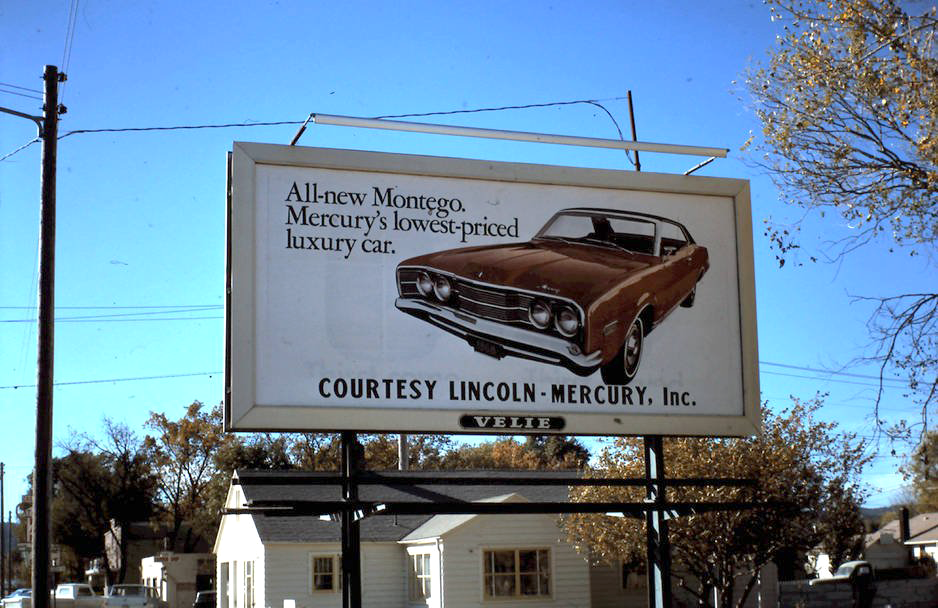
A Task Force was formed in 2006 to review electronic signs, message center signs, on-premise signs, and sign credits.
On March 15, 2010, the Rapid City Council passed a moratorium on permitting new signs off-premise and for changing on-premise signs from static to digital. The intent of the moratorium was to give time for a revision of the sign code. Advertisers objected, but a 90 day moratorium was approved by the city council.
Mayor Alan Hanks sent a memo to the Legal & Finance Committee with his appointees to the Ad Hoc Billboard Task Force. The initial list lacked representatives from the sign industry. A revised list was presented and approved by the council on April 4th, 2010.
The Task Force met on April 23rd, 2010 and May 14th, 2010. A memo with their recommendations were sent to the Legal & Finance Committee and then presented to the City Council at the June 7, 2010 meeting. The council discussed the changes on July 6th, but instead of moving forward on an ordinance changing the sign credit system, the recommendations were sent back to the Task Force. The Task Force met for a final time on August 5th. They sent a new recommendation to the council, asking for the creation of a new Sign Code Task Force. The City Council approved the creation of the new task force and placed a new moratorium on signs at the September 7th meeting (the moratorium would be lifted for On-Premise Electronic Message Centers).
The Ad Hoc Sign Code Revision Task Force met from November 10th, 2010, to June 1st, 2011. Members were appointed by the mayor at the October 18th meeting of the City Council, with a council representative and support from city staff. Their mission was to review the entire sign code. The Task Force was expected to meet its goal by February 1st, 2011. At the January 3rd, 2011 meeting of the City Council, the decision was made to extend the deadline to April 18th, but the sign moratorium would still expire on February 1st.
The committee presented its recommendations to the June 6th City Council meeting. At the meeting, the recommendations were pushed back to later sessions of the City Council and the Legal and Finance Committee, in part to give new aldermen a chance to become familiar with the suggestions. The Legal and Finance Committee reviewed the recommendations at their September 14th meeting, with plans to send items to the City Council for a special meeting on September 26th.
On April 4, 2011, two initiated measures were approved for the June 7th election ballot. Both measures addressed rules regarding billboards in Rapid City. The First measure banned new digital signs and regulated sizes for static signs. The second measure set a 20-year expiration date on sign credits.
On the same day, Lamar Advertising submitted applications for converting twelve traditional signs to digital billboards. The applications were denied due to the requirement that all new and modified billboards must receive a conditional use permit. Lamar argued that the permits were not required under the sign code, but a hearing with the city still denied the applications.
When the initiated measures came to a vote in June, they were both passed by voters. Then, in August, Lamar Advertising a lawsuit against the city. The lawsuit cited the billboard ordinances created by the initiated measures. The lawsuit eventually ended up before the South Dakota Supreme Court, which ruled in favor of Lamar Advertising on October 31st, 2012.
In 2012, the Legal & Finance Committee began consideration of three ordinances that would change and/or replace the existing sign code. The ordinances were discussed at the February and march meetings. At the May meeting, the ordinances were placed on a Special Meeting City Council Agenda for May 14th. At that meeting, the ordinances were given a first reading and modifications were voted on. The first readings were continued to the May 30th meeting of Legal & Finance which sent them to the council without recommendation.
The full City Council considered the ordinances on June 4th (items 49-51). The first reading initially failed, but after further discussion all three passed. The three ordinances passed a second reading on June 18th, becoming chapter 15.28, 15.29, and 15.30 of the Rapid City Municipal Code.
Lamar vs. City of Rapid City (2014) resulted in Judge Jeffrey Viken finding several parts of the sign code were invalid under South Dakota law. Lamar also filed a suit in federal court, seeking $10 million in lost revenue under Rapid City's sign code. In March 2016, Rapid City reached a settlement with Lamar Advertising. Among the conditions, Rapid City would pay $100,000, the ban on digital billboards would be repealed, and the distance between signs would be decreased.
Epic Outdoor Advertising filed a lawsuit of their own in December 2012. The lawsuit opposes the sign credit system, as the credits are no longer usable. Furthermore, Epic believed Rapid City violated state and federal law with the changes to the sign code. In 2018, Rapid City reached a settlement with Epic, which included additional amendments to the sign code by the city.
Photos of billboards used throughout Rapid City's history can be found in Rapid City Public Library's Local History Archive. Alongside the photographs are scans of articles about a 2002 revision of the sign code.